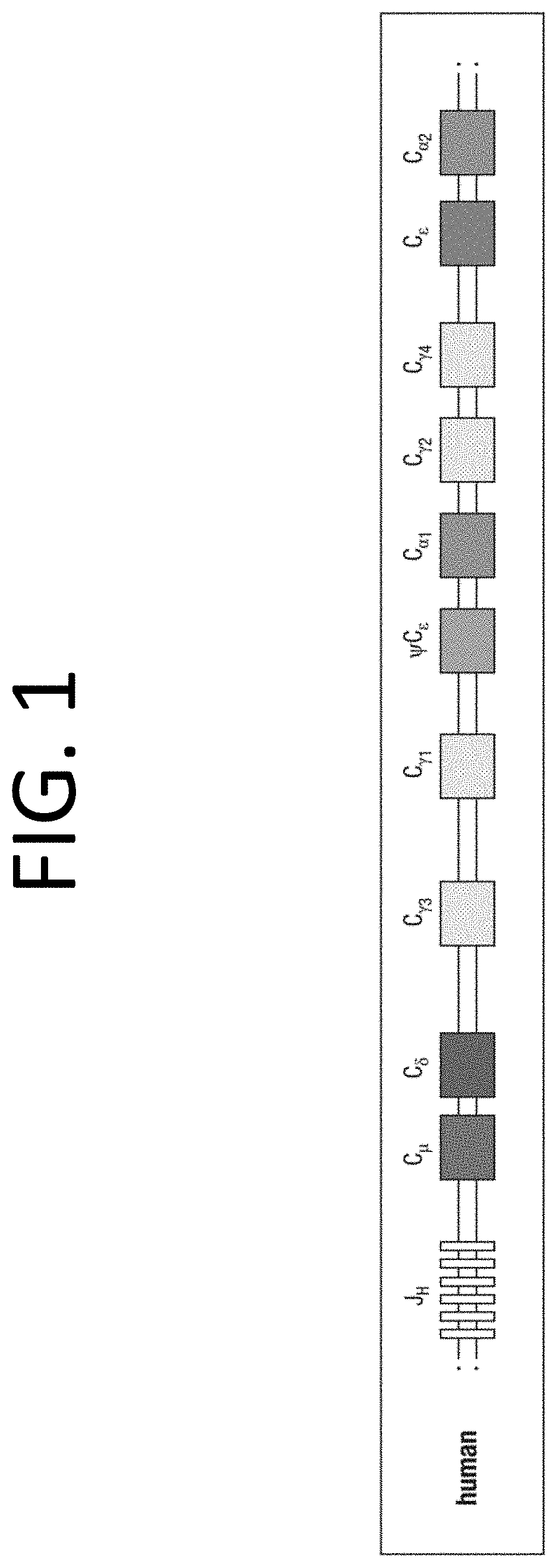Episomal Expression of Potent Immunoglobulins Derived from Human Blood or Convalescent Plasma to Enable Short term Vaccination / Immunization to COVID, COVID-19 and Mutants and Other Pandemic and non-Pandemic Viruses designed from Rapid FDA approval.
a technology of episomal expression and immunoglobulins, which is applied in the field of health care and biotechnology, can solve the problems of significant collateral damage, serious health complications, catastrophic economic stress, etc., and achieve the effects of preventing adverse health effects, reducing the possibility of cytokine storm, and reducing the risk of cytokine storm
- Summary
- Abstract
- Description
- Claims
- Application Information
AI Technical Summary
Benefits of technology
Problems solved by technology
Method used
Image
Examples
Embodiment Construction
[0028]This present invention and proposed vaccination / immunization is designed to achieve safety and efficacy by embracing the most potent immunity developed in healthy humans exposed to COVID, COVID-19 its mutants or other pandemic and non-pandemic viruses. The invention describes the method to identify the DNA sequence and / or polypeptide sequence of high affinity immunoglobulins expressed in individuals that were infected with the virus of interest. The invention further describes the method to design vectors expressing those immunoglobulins and also dimeric immunoglobulins class A (DIgA) necessary for mucosal immunity that encode at a minimum the V-regions if not the entire polypeptide sequence of the potent immunoglobulins identified from the memory B-cells isolated from persons that were infected with the virus of interest. Delivery systems are also described which include AAV, lentivirus and vesicle based delivery systems.
[0029]Blood will be collected from individuals that wer...
PUM
| Property | Measurement | Unit |
|---|---|---|
| fluorescence activated cell sorting | aaaaa | aaaaa |
| binding affinities | aaaaa | aaaaa |
| real time polymerase chain reaction | aaaaa | aaaaa |
Abstract
Description
Claims
Application Information
 Login to View More
Login to View More - R&D
- Intellectual Property
- Life Sciences
- Materials
- Tech Scout
- Unparalleled Data Quality
- Higher Quality Content
- 60% Fewer Hallucinations
Browse by: Latest US Patents, China's latest patents, Technical Efficacy Thesaurus, Application Domain, Technology Topic, Popular Technical Reports.
© 2025 PatSnap. All rights reserved.Legal|Privacy policy|Modern Slavery Act Transparency Statement|Sitemap|About US| Contact US: help@patsnap.com



